Side-by-side cultivation of rice and crayfish creates sustainable, profitable model
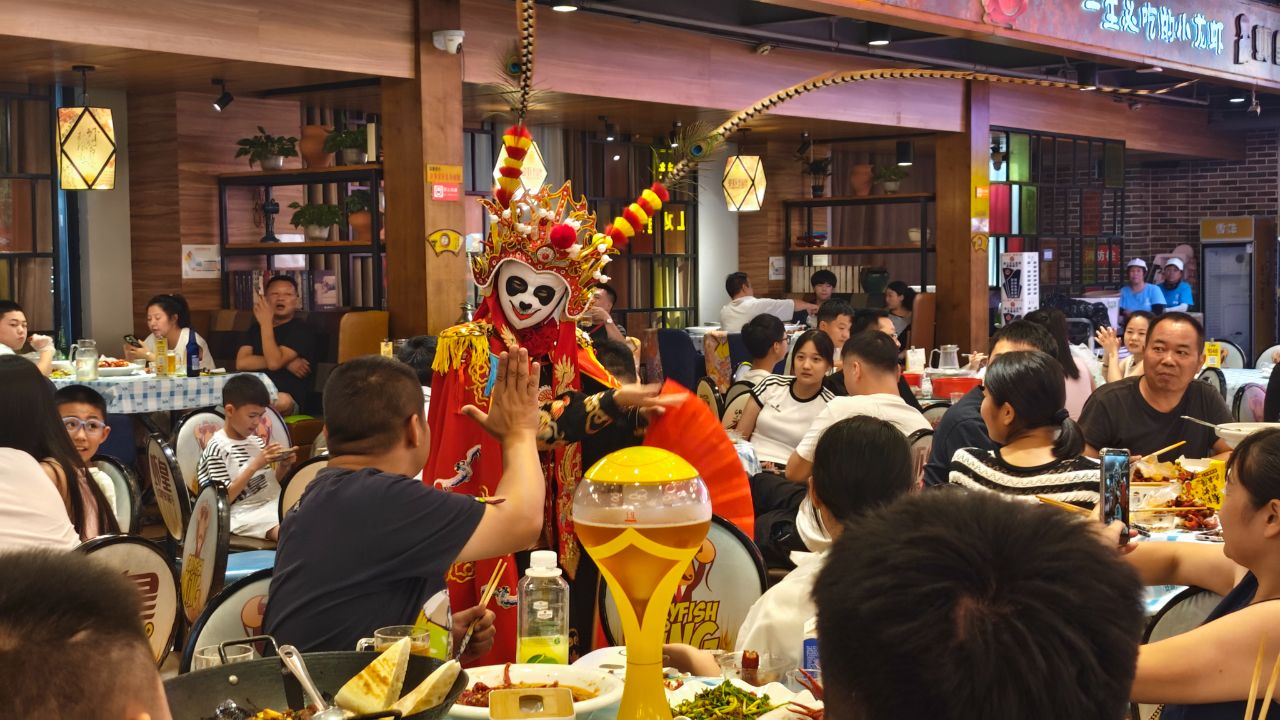
In late August, crowds gather around tables in the night markets of Qianjiang, Hubei province, to gorge on plates of steaming crayfish liberally doused in chili oil and garlic. Shells are cracked, fingers licked, and beer bottles clinked in toasts to the feast.
This scene plays out all across summer dining tables in China, but it's no more special than in Qianjiang — the birthplace of the Qianjiang Model — an agricultural process whereby crayfish are co-cultivated alongside rice.
Though many diners are unaware of this process as they tuck in, since 2001, this circular ecological practice has been in place in the city, enabling farmers to use one field and one pond for dual harvests, creating a model for how agriculture can be profitable and environmentally sustainable at the same time.
READ MORE: Crayfish drive rural vitalization
Dai Hua, head of the Qianjiang Agricultural and Rural Affairs Bureau, said the innovative cultivation model ensures two harvests — grain above and crayfish below — while protecting the ecosystem and increasing farmers' income. "It's not just farming, it's a subtle cycle," Dai said.
The co-cultivation of rice and crayfish involves rice plants growing in shallow paddies while crayfish thrive in the muddy waters beneath. Insects and microbes attracted to the rice stalks become natural feed for the crustaceans. Their waste, in turn, nourishes the rice. After harvest, rice straw is left in the fields, decomposing to enrich the soil rather than being burned to pollute the air.
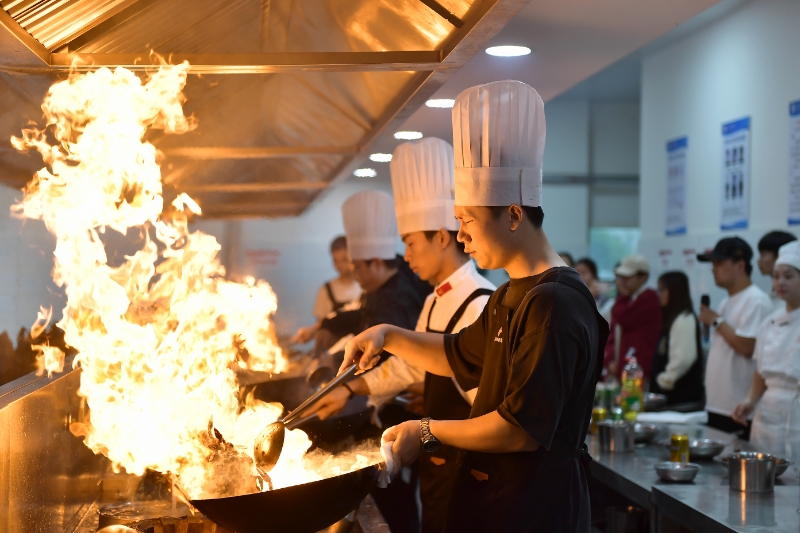
The nature-based biological chain involves lower chemical use, cleaner water and two lucrative harvests from the same plot, Dai said.
The model not only doubles output, but also creates a natural balance that farmers and the environment both benefit from, he added.
According to the bureau, more than 95 percent of Qianjiang's 63,133 hectares of rice paddies now practice co-cultivation. Last year, the city produced 157,200 metric tons of crayfish, up 17 percent from the year prior, along with a bumper crop of rice. In the first half of this year, 122,500 tons of crayfish were harvested, a 4.6 percent year-on-year increase.
Local farmers have greatly benefited. "Ten years ago, I could earn maybe 7,500 yuan ($1,054) per hectare from rice," said Chen Liang, a farmer who tends 7.7 hectares in the Houhu Management Zone in Qianjiang.
"Now, with rice and crayfish together, I make at least 30,000 yuan per hectare and earn an annual income of 300,000 yuan," Chen said.
As a result of the higher income, Chen's family bought a car, renovated their house and started taking vacations nearby. "We used to work all year in the fields, rain or shine," he said.
"Now, the busiest time is just a month or so during crayfish season. With mechanization, the rest is manageable and life has more balance."
Apart from higher income, the model reduces agricultural inputs and brings environmental benefits. "We barely use fertilizers or pesticides," he said.
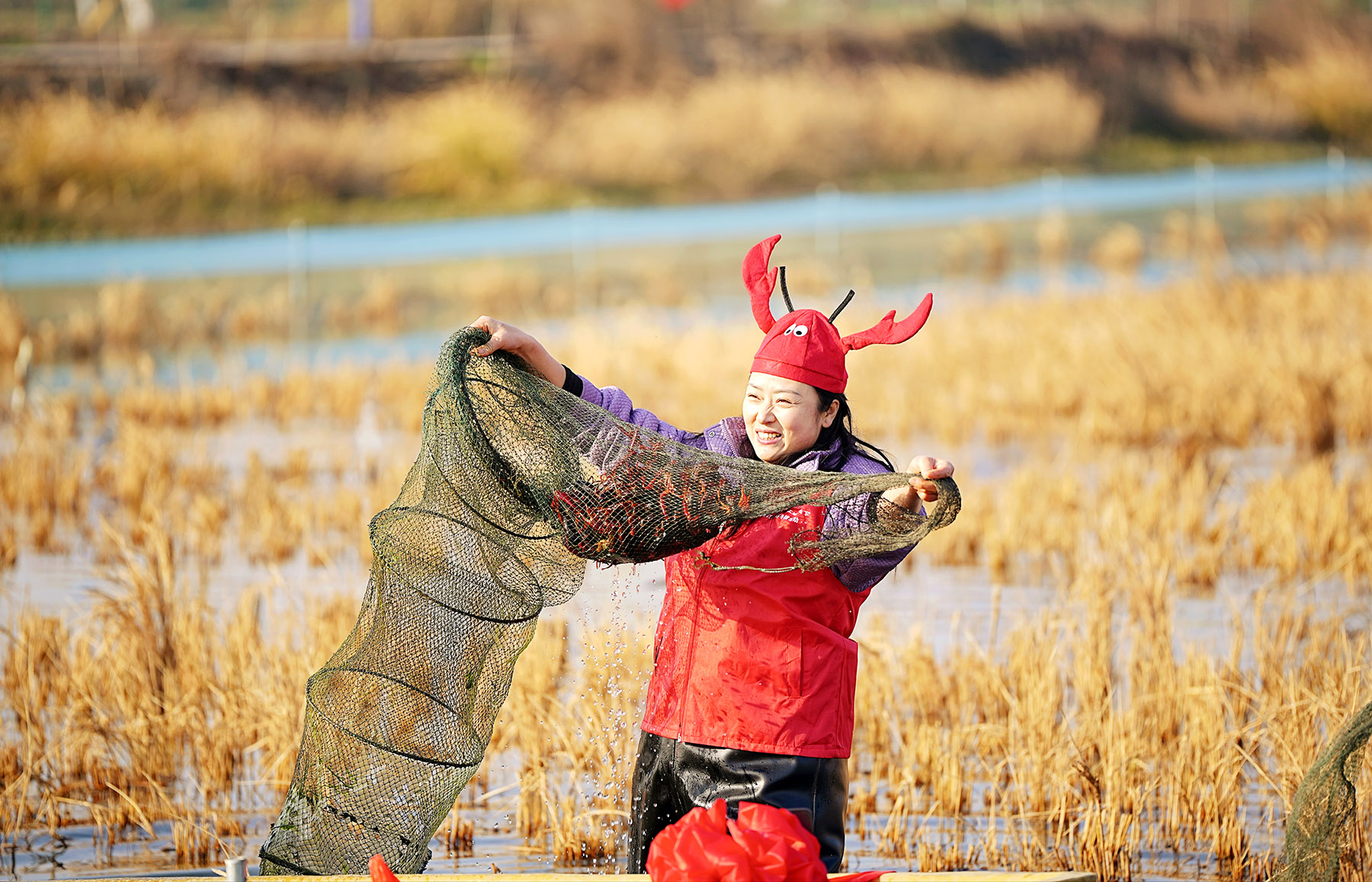
The model reduces pesticide use by at least 50 percent and insecticide use by 70 percent, local authorities said.
Liu Ping, director of the local ecology and environment bureau, said agriculture is a major source of water pollution in China, with nationwide fertilizer use efficiency hovering around just 40 percent.
"Normally, 55 to 60 percent of water pollutants come from farming," he said. But in Qianjiang, the rice-crayfish model has had no negative impact on the water and even, to some extent, realizes the recyclable use of water, he added.
The recycling of rice straw, which is plowed back into the fields instead of being burned, improves soil fertility and air quality. "It's a form of circular farming that people here accept because they see the benefits," Liu said, adding that local scientists are studying the long-term effects of straw recycling on soil structure in order to manage the balance.
Qianjiang began experimenting with rice-crayfish farming in the late 1990s, but for years it was seen as a novelty. However, as incomes rose and the ecological benefits became clear, the model spread. Today, Qianjiang's fields are dotted with bases of every size — 13 large-scale sites spanning more than 666.67 hectares each, and 70 mid-sized bases over 66.67 hectares.
Yang Yungang, deputy director of the Qianjiang Crayfish Industry Promotion Center, said the city has built a full industrial chain around its paddies. Some 19 processing companies and dozens of smaller factories turn raw crayfish into packaged dishes, snacks and condiments.
"Shrimp Valley, China's largest crayfish trading hub, funnels hundreds of varieties of prepared crayfish to restaurants, supermarkets and e-commerce platforms across the country," Yang said.
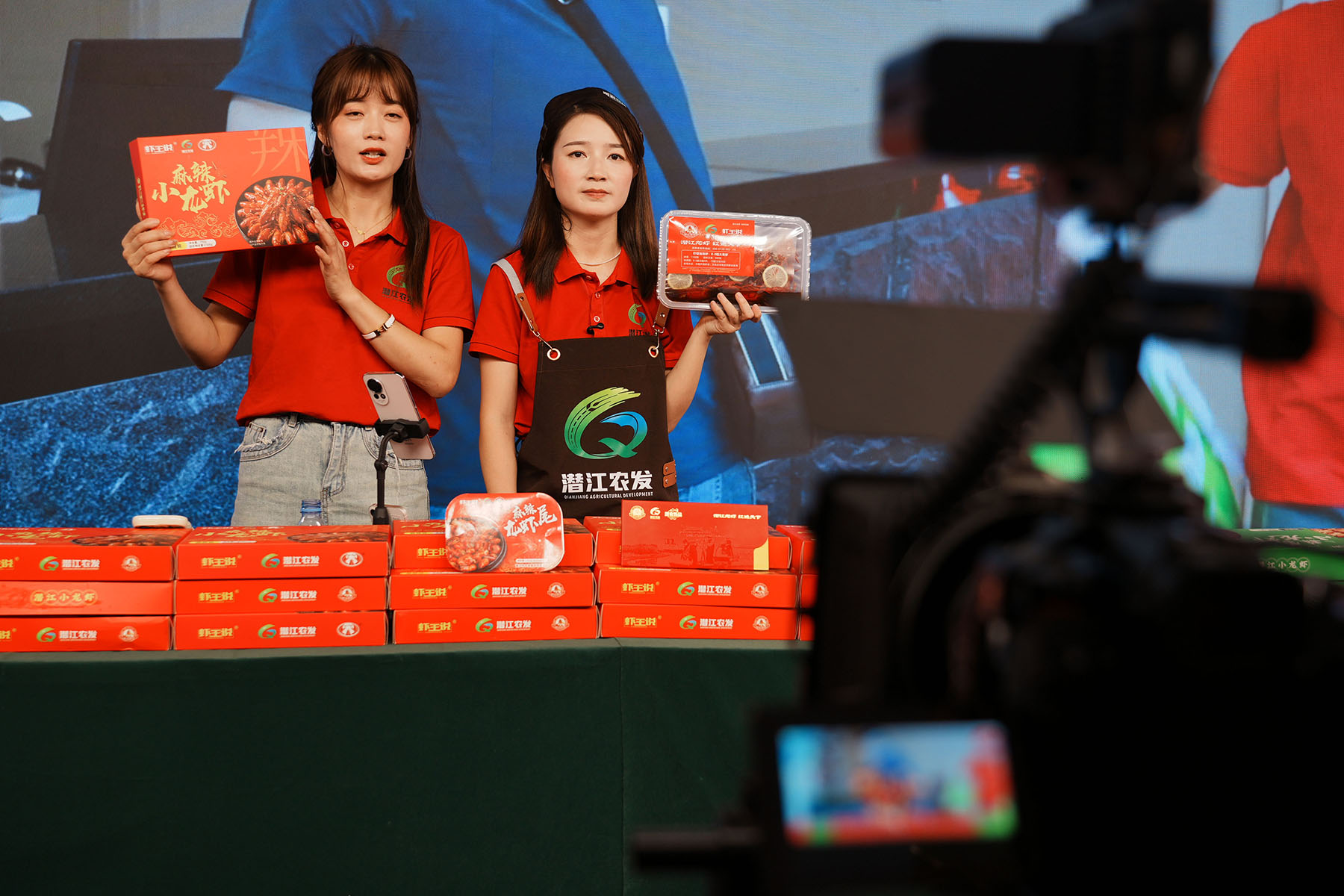
The center produces more than 100 products such as oil-braised crayfish, frozen packs for online delivery, and health supplements, he added.
Many younger villagers who were once eager to leave for factory jobs in cities are coming back to try their hand at co-cultivation, said Zou Yudong, head of crop management at the local agriculture bureau. "As long as there's income, farmers are motivated. This model provides them with steady life and development opportunities in their hometown," Zou said.
Local authorities said that the city is promoting the standardization of seeds, inputs, farming practices, field management and harvesting to improve the quality of crayfish.
However, Yang from the crayfish promotion center cautioned on the industry's rapid rise.
"If crayfish reproduce too quickly, density goes up and size goes down, which lowers market value," Yang said.
Researchers continue to refine the model by testing composite systems, adding other marine life such as mandarin perch and eels, or planting aquatic vegetables alongside rice and crayfish to balance ecosystems and ease overcrowding, he said.
Breakthroughs have been made with winter crayfish farming in ponds that can achieve year-round supply, such as the ability to produce seed stock by separating breeding and farming areas within the same pond, said Zhang Yun, head of the center.
"The new system improves survival rates and enables rotational stocking and harvesting, ensuring a steady supply of crayfish," Zhang said.
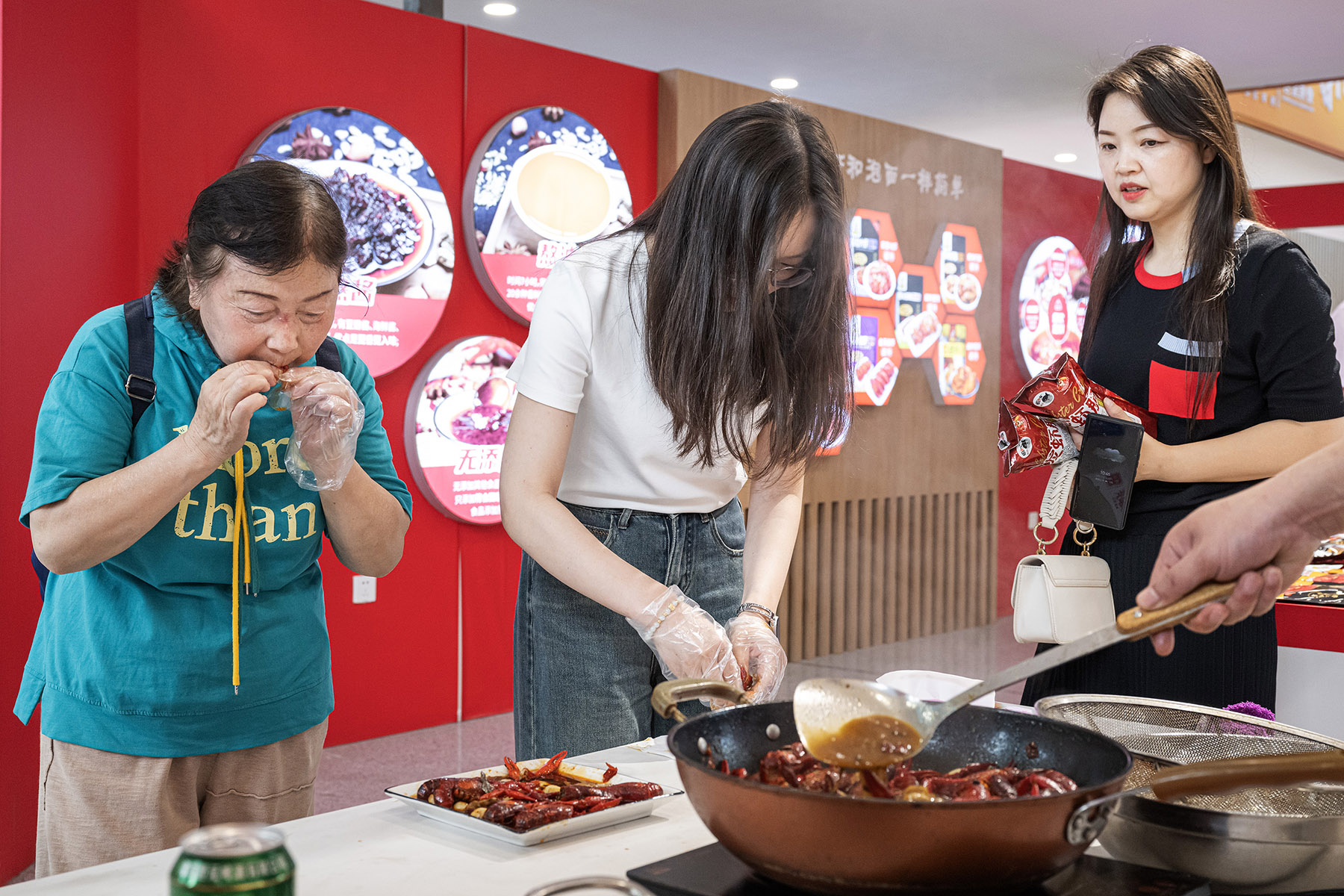
The nutritional shortages in winter have been overcome with microbial fermentation and specially processed feed that improves digestion in low temperatures. Farmers also supplement essential minerals directly into the water to stabilize conditions and support growth during colder months.
Cold-resistant aquatic plants are also used in ponds to maintain coverage throughout the year, supported by microbial methods that keep water stable. "These innovations give farmers more stability in both income and production," he added.
From December to February, Qianjiang supplied 24,000 tons of winter crayfish to the market, generating an output value of 2.19 billion yuan and effectively filling the seasonal gap in winter crayfish supply, officials said.
ALSO READ: China has right ingredients for culinary success
Chen, the farmer, said he still remembers the early days when he and neighbors borrowed heavily to reshape their paddies for crayfish. "It was tough. We had to build water channels, invest in pumps, and learn new techniques. At first, the pressure was huge," Chen said.
With seven years of experience, Chen feels confident. "The land gives back more than it ever did before. We don't just wait for good weather anymore. We have a functional system," he said.
Contact the writers at zhaoyimeng@chinadaily.com.cn


